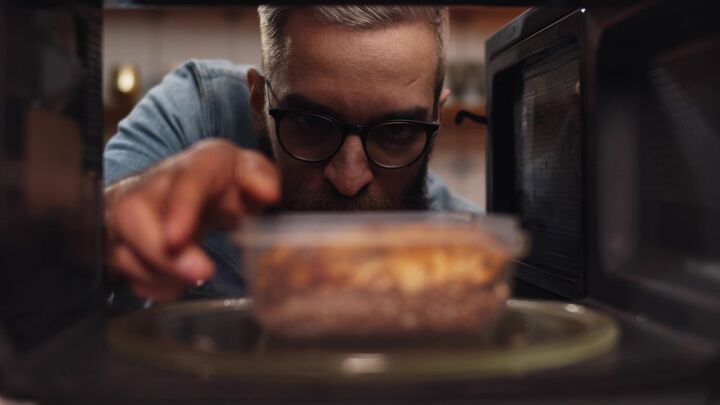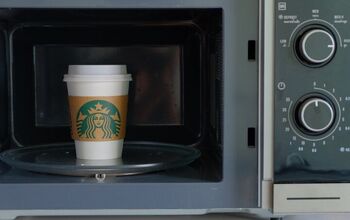Can You Microwave Plastic Tupperware?

No kitchen cabinet is complete without some plastic Tupperware containers, and they’re a modern convenience. While they have their place in your kitchen cabinet and refrigerator, they aren’t safe for every appliance. So, can you microwave plastic Tupperware?
You can microwave plastic Tupperware if it is officially microwave-safe and is labeled as such. Old plastic Tupperware contains BPA which is dangerous to microwave, ingest, and even breathe in the air. Check to see if there is a microwave symbol on your plastic Tupperware and read the original packing before you heat it to avoid health problems.
Never put metal or styrofoam containers in your microwave as they are highly flammable. Check to see how old your plastic Tupperware is before you microwave it as well. Tupperware that is over 10 years old is likely unsafe to microwave because of the BPA content. Follow along as we explore the safety of microwaving plastic Tupperware.
Is Tupperware Plastic Safe to Microwave?
It is only safe to microwave plastic Tupperware if is labeled as microwave-safe. Inspect the plastic Tupperware and look for a microwave symbol to see if it is safe. Otherwise, you can look at the original packaging for the Tupperware and read it to see if it’s okay to put in the microwave.
Some Tupperware products contain BPA which is dangerous to microwave and ingest. Also known as bisphenol A, BPA is a dangerous chemical that has proven potential for health, developmental, and behavioral problems in humans. You can increase the danger of BPA when you microwave it or add heat which makes it easier to spread in the air or get into your food.
Modern Tupperware containers don’t include BPA, however, which makes them safe to microwave. Plastic containers without BPA aren’t always safe to microwave despite lacking the dangerous chemical. That is why you need to look for a microwave-safe label before you put your container in the microwave even if it is BPA-free.
Can you Microwave Old Tupperware?
It is typically unsafe to microwave old Tupperware because it used to be produced differently. Tupperware didn’t start making containers that you could microwave until roughly 10-12 years ago. Old Tupperware products typically weren’t BPA-free which means that they are dangerous to microwave.
Look up your particular old Tupperware container if you are unsure of how old it is. You may be able to use it if that model is microwave-safe, but otherwise, it’s not worth the risk. Buy new Tupperware containers that are microwave-safe if you are unsure about how old your container is.
What Containers are Safe to use in Microwave?
Glass, ceramic, and some types of plastic containers are safe to use in a microwave. Not all glass containers are safe to use in a microwave. Check to make sure that the glass is heat-proof, otherwise, it may shatter due to the extreme temperature or from thermal shock.
Ceramic containers can typically withstand heat without a problem. Thermal shock is the main concern when it comes to ceramic and glass containers in a microwave. This occurs when there is a rapid temperature change and it can cause your container to shatter.
Try not to put a cold container straight from the fridge into your microwave unless it is microwave-safe to avoid thermal shock. Never put a metal container in your microwave because you will break them both and cause potential harm. Luckily, wax and parchment paper is safe to put in a microwave without a problem.
What Cannot be put in Microwave?
Styrofoam, metal, and certain types of paper cannot be put in a microwave. Some types of paper, such as paper towels, can catch on fire in the microwave. Never put a paper towel in the microwave unless it is labeled as microwave-safe to avoid a fire.
Styrofoam is also quite flammable under extreme heat conditions and it can damage the microwave and even start a fire. Metal can and will explode in a microwave, and you should avoid it at all costs. It heats so quickly that the combination of the temperature and pressure causes metal to explode.
Related Guides

Nick Durante is a professional writer with a primary focus on home improvement. When he is not writing about home improvement or taking on projects around the house, he likes to read and create art. He is always looking towards the newest trends in home improvement.
More by Nick Durante



























